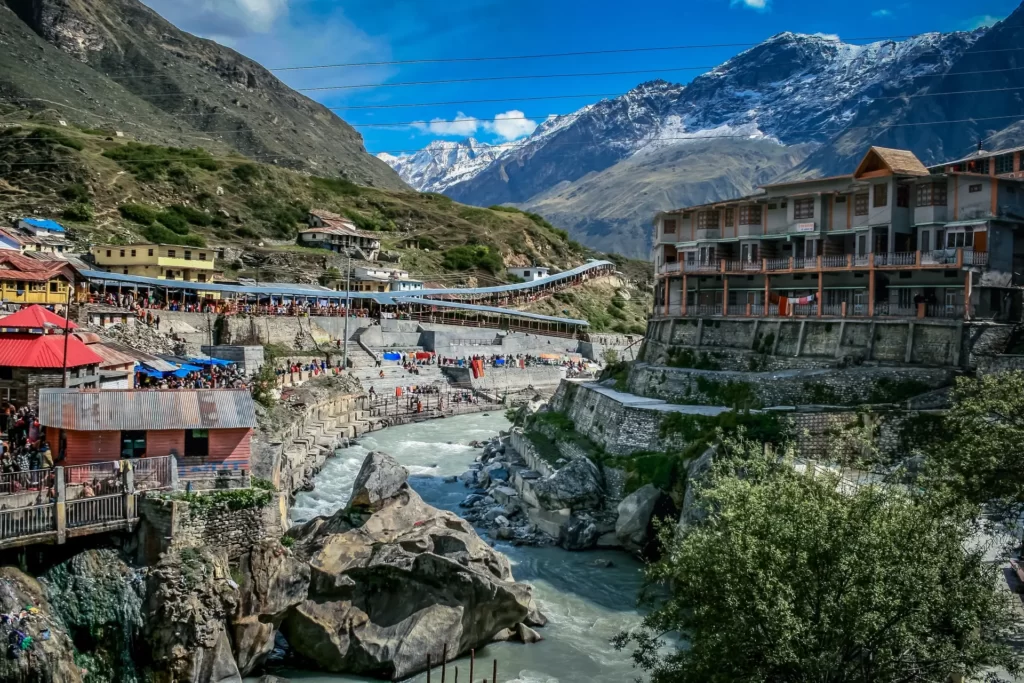History of Uttarakhand, the sainted and splendid beauty!
When we think about Uttarakhand, the first things that come to mind are the mesmerizing rivers and the spiritual destination that makes our hearts glowingly.
So let’s dig in some more to know about the history of Uttarakhand.

History of Uttrakhand
In the Vedas and Puranas, Uttarakhand is said to be the Heaven and home for all the virtuous saints
and gods, and this is why it is also known as Devbhoomi. As it is where the auspicious river Ganges
comes from. As per a very well-known Historian Mr. Shib Prasad Dabral, the Name Uttarakhand is
derived from Uttarapad, and Khand is taken from Kedarkhand, which makes it Uttarakhand.
The pure and sainted land has beautiful ancient monuments of the long-ago era, and not only that, the environment of the very holy ground echoes the stories of the righteous Kingdoms and Sages.
Uttarakhand is a land that fills you with peace and serenity; one can feel a different kind of
calmness inside their mind after visiting here. It makes you feel aware of your being; maybe that is
the effect of the Vedic textual shreds of evidence of this land being so holy and religious.
It is also said that the Maharishi Ved Vyas wrote the epic Mahabharata in Uttarakhand and used to
call Uttarakhand Uttarakuru. Saint Valmiki denoted the land as Uttarkaushal, and similarly for Panni
and Kautilya it was uttarapatti.

Regions of Uttarakhand
The state has a reference in history as the part of Mahajanpadas that is Kuru and Panchal in the
Vedic age. Pithoragarh, Nainitaal and Almora are notes as Kumaon region. The other places in
Uttarakhand are Shivalik, Rudrahimalaya, Kurmanchat Karajat, Kamadesh, Sapaladaksh, Kamaugarh
Garhwal, Kumau, and Sarkarl. There are 52 forts on the western side of the region which is known as
Garhwal for 500 years.
Dehradun, Pauri Chamoli Uttarkashi, and Samprat bloom Garhwal with more beauty.

History of Garhwal and Kumaon
The archeological excavations have disclosed that Garwhal shaped a part of the Mauryan Empire.
Whereas rock shelter in Lakhu Udyar confirms the Stone Age settlements in Kumaon.
King Katyuri ruled the vast areas of Kumaon from the 7th to 11th Century. Baijnath was the
capital of this dynasty and the centrum of arts.
Under the Katyuri rule, the Temple building expanded, and it was then that they revolutionized the
architectural techniques by simply replacing bricks with stones.
Katarmal Sun temple is 900 years old and was built in the descending years of the Katyuri Dynasty.
The Chand Dynasty governed the Kumaon region before the 18th Century. And the Garhwal
region was ruled by the Parmar and Panwar Dynasties. Succeeding the blitz of Gorkhas in 1790-91
Gorkhas dominated the full Garhwal and Kumaon region.
In the Pact of 1815 districts of Tehri and Uttarkashi came under the administration of King
Sudarshan Shah. While on the Contrary, the districts of Pauri Garwhal, Chamoli, and Rudraprayag with
the whole Kumaon region came under the governance of the British till 1947.
Later on, after independence, the estate Tehri was added to the earlier part of Uttar Pradesh, and
commissioner Kumaun took the whole area under its control. As the Kumaun division’s border area
was sensitive and the chances of war with China districts of Gharwhal Tehri and Almora were
divided. In 1960, 3 New districts were also formed; Pithoragarh, Chamoli, and Uttarkashi.

Religious History of Uttarakhand
There are several pieces of evidence from the artifacts that in the ancient times, Folk Shamanic
religion, Shaivism, and Buddhism were practiced in the region.
People Culture and Festivals History of Uttarakhand.
The people of Uttarakhand are very connected to their roots, culture, and beliefs. Primarily there is
an unwavering bond between nature and mythology.
There are so many folk stories, songs, rituals, and festivals that are celebrated with utmost
happiness and joy.
The people of Uttarakhand are susceptible to the climate and cleanliness care of their state.
So they’re often seen while communicating with the tourists and travelers to show respect and concern
for the place they have come to explore and cherish forever.
Hence the people of Uttarakhand are heartfelt towards nature and humanity; therefore, they try to
keep their surroundings clean as much as possible.
The vibrant festivities, performing rituals, and cultural celebrations of Uttarakhand are both joyful
and beautiful because of their entrenched plethora of nature and rich mythology.
As there are various occasions in Uttarakhand which are celebrated with immense gladness and
cheerfulness, and so are the dances. Yes, there are so many stunning folk dances in Uttarakhand, which
are called Ramola Shotiya, Barada Nati, Langvir Nritya, Choliya Dance, Jagars, Jhora, Chancheri,
Chhapeli, Tribal Folk Dances, Thalli-Jadda, Pandav Nritya, Jhainta, and Bhotiya Dance, are
performed on so many cultural occasions and festivities.
To sum up
Uttarakhand’s rich heritage and history and the vivid Folk art and culture are what make this
paradise more and more vibrant and wonderful.
Keep on reading more about Uttarakhand here in our upcoming posts so that we can create a ripple
in your heart for the urge to visit this beautiful land of sacredness.
To Book Bird Watching Tour in Jim corbett Park Or Rajaji National Park
Direct WhatsApp Contact – https://bit.ly/3MBDKJ7
Or Call Directly at 9760385133
Read our other Articles – Best River Side Resort in Rishikesh
Subscribe to our YouTube Channels for more Rajaji National Park Information